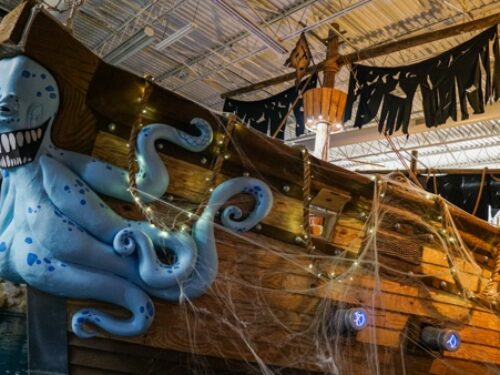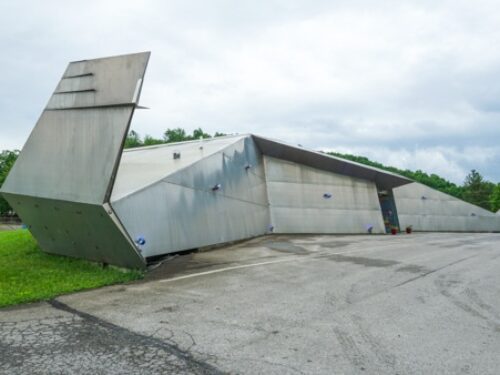Published by Jeremy. Last Updated on June 5, 2024.
Disclaimer: Our site uses demographic data, email opt-ins, display advertising, and affiliate links. Please check out our Terms and Conditions. Pricing, operating hours, or menus may have changed since our initial visit and may not be reflected in subsequent updates. Please confirm these directly with any business or attraction prior to visiting.
Every battle that takes place has the capacity to change the history of the world as we know it.
While Pittsburgh and southwest Pennsylvania has not experienced too many appreciable battles, the five major events that occurred have been some of the most consequential in early American history.
From George Washington inadvertently kicking off the French and Indian War, to the British taking over the confluence from the French, and Pontiac's War shortly thereafter, the events that transpired between 1754 and 1763 had a profound impact on the region we know and love today.
So let's take a look at some of the major battlefield sites near Pittsburgh and share a bit more about their significance and what you can see when visiting today!
Planning a trip to Pittsburgh?
Book your trip early to snag a deal and have a great time!
Top Experiences and Tours 🍇
Top-Rated Hotels in Pittsburgh 🏨
- Great Value: Drury Plaza has great prices downtown
- Good Views: Sheraton Station Square has stellar views from river view rooms
- Free Parking: Hampton Inn Strip District has a free parking and a great location
🏠 Looking for an apartment rental? Find a deal on VRBO!
Fort Necessity and Jumonville Glen
In the early settlement days, tensions were heavy between the French and the British as both wanted to control the confluence in what is now downtown Pittsburgh. The rivers' strategic advantage and fame as the “Gateway to the West” truly made it a prized spot to control.
On May 28th, 1754, George Washington led a command of troops in what is now the Laurel Highlands where they met up with a small French Canadian force, ambushed them, and resulted in the killing of the commander Joseph Coulon de Jumonville at what is now known as Jumonville Glen.
Anticipating a response, Washington and his troops built a makeshift fort nearby, named Fort Necessity. On July 3rd, 1754, the French attacked and defeated Washington and his troops. It is said that Washington's surrender involved signing a document in French that was mistranslated, stating that Washington's troops assassinated Jumonville, which further escalated the conflict that ultimately became the French and Indian War, turning into the Seven Years' War, and, in part, increasing tensions leading up to the American Revolution.
Would history have been different if Washington had not attacked Jumonville in the Laurel Highlands? We can never say for sure, but it sure feels like the events that transpired here had a massive impact on the course of modern history!
Today, Fort Necessity is a National Battlefield Site maintained by the National Park Service and is home to a modest museum where you can learn about the history of the battles- including seeing a recreation of Fort Necessity on-site.
While at the museum, be sure to make the short drive to Jumonville Glen and Braddock's burial site nearby to connect the history of this and subsequent battles discussed below.
Fort Necessity is located at 1 Washington Parkway in Farmington, PA. Jumonville Glen is located a few miles to the west off of the same road.
Braddock's Battlefield
Of course, the British were not going to sit back and take the loss at Fort Necessity as a sign of defeat. As the French and Indian War was heating up, the Braddock Expedition, under the command of General Braddock (along with George Washington), began to try and claim the confluence in the name of the British.
This campaign progressed to approximately 10 miles east of the confluence where the British engaged the French at the Battle of Monongahela in what we now know as Braddock, PA. The British were defeated, General Braddock was mortally wounded during the battle, died four days later, and was buried near Fort Necessity, above.
Today, Braddock and North Braddock are quiet boroughs just outside of Pittsburgh. However, the Braddock's Battlefield History Center can be found on what is thought to be the battleground site and showcases the history of the region leading up to and beyond the battle- with commentary of not only the British side, but also the French and Native American participants as well.
After visiting the museum, be sure to drive a few blocks around the corner to Jones Avenue to see a statue of George Washington and a historic sign denoting the battle as well.
Braddock's Battlefield History Center is located at 609 6th Street in North Braddock, PA.
Fort Ligonier
The final British campaign to take over the confluence was the Forbes Campaign, taking place in 1758. Fort Ligonier was a British fort located in what is now Ligonier, PA, and was the final fortification before the confluence.
This fort was attacked a few times during this period, notably during construction on October 12th, 1758, by the French and during Pontiac's War in 1763. Both of these ended with British victories. However, its primary role is being known for the launching point of the Forbes Campaign where General Forbes, George Washington, and others prepared to take control of the confluence.
Today, Fort Ligonier is home to a beautiful recreation of the fort, as well as a museum on-site sharing the history of the Forbes Campaign at large. This is one of the largest re-created forts in the region, and does a fantastic job connecting earlier battles with the preparations that led to the Battle of Fort Duquesne and subsequent taking of the confluence.
Fort Ligonier is located at US Route 30 and PA Route 711 in Ligonier, PA.
Join our Facebook groups Things to Do in Pittsburgh and Pittsburgh Photography for more local content!
Battle of Fort Duquesne
The British first mounted an attack on Fort Duquesne at the confluence on September 15th, 1758. Major Grant led troops on a march to the confluence in an attempt to ambush the French, which failed and led to a retreat. The location of this battle is thought to be the former hill where Grant Street resides in downtown Pittsburgh today.
In subsequent battles in the area, particularly the fight at Fort Ligonier on October 12th, both sides seemed to come to the same realization- Fort Duquesne was significantly underequipped to manage a full British assault. British forces were thought to be about ten times the size of the French, and, as a result, the French set fire to Fort Duquesne on November 24th and escaped in the night.
The British quickly took control of the confluence, built Fort Pitt, and retained control of the region until the American Revolution a few years later. That said, Fort Pitt was not a place of full peace time, as a battle in Pontiac's War took place here on June 22nd, 1763; however, the attackers were quickly defeated.
Today, most of Fort Pitt has been lost to history. One building, the Fort Pitt Blockhouse, remains, and is dated to 1764 (the oldest building in Pittsburgh) and is often open to visit inside. A modest museum, the aptly named Fort Pitt Museum, can also be found on-site and traces back the history of the early days of the confluence and western Pennsylvania. In the summer months, you may also find re-enactors on-site as well.
Likewise, the outlines of the former forts can be found inside Point State Park as well to highlight the historical significance despite being lost to history.
The Fort Pitt Museum and historical sites can be found at Point State Park in downtown Pittsburgh.
Bushy Run Battlefield
The final major battle that took place in southwest Pennsylvania was part of Pontiac's War (often called Pontiac's Rebellion). This war took place in 1763 and was an uprising of Native Americans who opposed British rule in the Great Lakes areas.
Many forts were attacked throughout the frontier during this time, with battles taking place at Fort Pitt on June 22nd, 1763 (as noted above) and a much more consequential battle on August 5th and 6th at Bushy Run, near modern-day Jeannette, PA. The latter battle involved 500 British soldiers coming to the aid of Fort Pitt who were ambushed near Bushy Run Station and defeated the attackers over the course of the two-day battle.
Although the war continued until 1766, these battles helped secure the forts within southwest Pennsylvania all the same.
Today, Bushy Run Battlefield is home to a small museum dedicated to the history of the uprising, and a historical marker is found in the field where the battle took place.
Bushy Run Battlefield can be found at 1253 Bushy Run Road in Jeannette, PA.
Bonus Sites Not to Miss
While the above are arguably the most famous battle sites in southwest Pennsylvania, there are other famous spots with military significance in the region you may also want to check out:
- Washington County and southern Allegheny County is home to numerous historical sites for the Whiskey Rebellion that took place from 1791 to 1794. The rebellion was a protest of the whiskey tax in the early days of Washington's presidency. The Oliver Miller homestead in South Park, the Bradford House in Washington, PA, and Kane Woods plus Old Saint Luke's Church in Carnegie, PA, are all sites worth checking out.
- Don't miss Liberty Pole Spirits in Washington, PA, which honors the history of PA whiskey and the Whiskey Rebellion Festival that often takes place in July as well!
- Arsenal Park in Lawrenceville was home to a supply and manufacturing center during the Civil War. The arsenal exploded on September 17th, 1862, and is thought to be the largest non-military disaster of the war.
- The USS Requin is a Tench Class submarine that was built at the end of WWII. Guests can go inside the submarine just behind the Science Center on the North Shore during its seasonal operating hours.
- Finally, Soldiers & Sailors Memorial Hall in Oakland has a modest museum dedicated to all those who have served in the military from the region.
Do you have a favorite battlefield site in Pittsburgh? Comment below to share!











